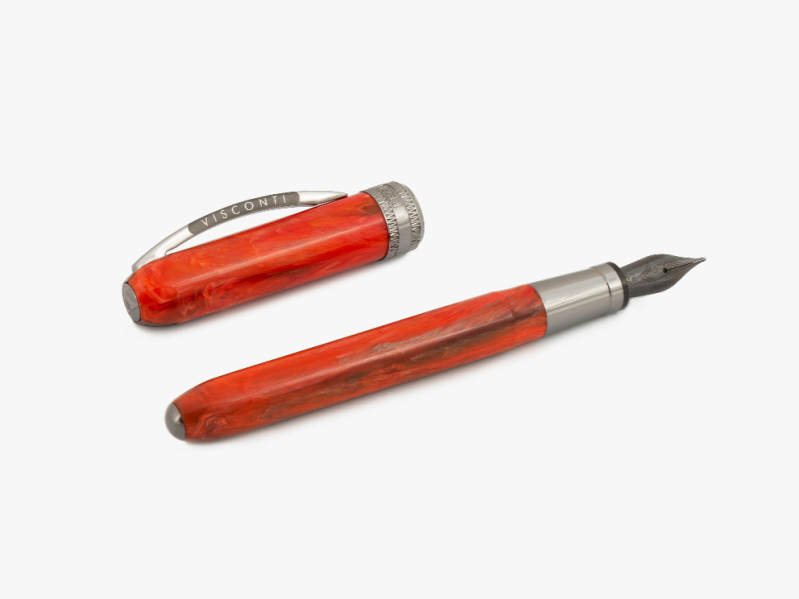Sometimes, nothing can beat the tactile feel of a traditional pen and paper setup. But more importantly, there are occasions where traditional writing styles are preferred, such as invitations, letters, and other more personal stationery projects. Or, maybe you just want to practice or make use of your calligraphy skills? There is a solid argument for writing things down by hand versus using a mobile device or note-taking app. Whatever the case, for these instances, it’s best to use a luxurious pen or, rather, a fountain pen. Compared to something like ballpoint pens or even gel pens, fountain pens offer masterful experiences with sleek, modern designs and an elegant inked style on paper that is downright unmatched.
Best classic: Montblanc Meisterstück Gold-Coated Classique Fountain Pen

This classic homage features a black precious resin body inlaid with a white Montblanc brand emblem. It’s also adorned with gold, including a 14-karat gold nib and rhodium-coated inlay. It’s designed with a piston converter, so you can use ink cartridges if you wish. But best of all, it can be personalized, meaning you can have it engraved with either your name or initials.
Best selection: Parker Duofold Classic Fountain Pen

Available in 11 distinct styles, made of 21 individual and high-quality pieces, and with an 18-karat solid gold nib, the Duofold fountain pen from Parker certainly offers a lot of personalization. For example, you can choose a classic gold and black style, prestigious blue and gold Chevron, or go big and bold with all red. Ultimately, it’s designed to capture the spirit of the roaring twenties, especially since Parker has been around since then, even longer actually. The laser-etched barrel and palladium-finished trims are just icing on the cake.
Best for versatility: Visconti Rembrandt-S Fountain Pen

Made with a less flashy, minimalistic style yet equally as beautiful as anything else on the list, the Visconti Rembrandt-S is available with either a cartridge or converter fill type. You can also choose between three fineness levels, Fine, Medium, and Broad. One of the more interesting things about Visconti’s custom pens is that you can personalize the style even further, selecting accents like the materials or stones used, adding engravings, and more. We selected it for its versatility because it can be used virtually anywhere, as it’s easy to stow, even with some ink refills, and can also be used by any skill level and for any stationery craft.
Best for everyone: Magna Carta Durham Fountain Pen

With its reasonable price, this fountain pen from Magna Carta won’t break the bank. It’s no slouch in the appearance department either, thanks to its unique engraved checkers pattern on the body. The nib has a steel gold trim, and it utilizes a cartridge and converter fill type. If you’re not a fan of the black and silver design but like the options, be sure to check out some of Magna Carta’s other fountain pens — there are quite a few styles to choose from.
Best for luxury: Montblanc Writer’s Edition homage to Robert Louis Stevenson LE 94 fountain pen

At $38,000 this intricately designed fountain pen is not for the budget-minded, that’s for sure, but it is absolutely gorgeous. Designed as a homage to famed author Robert Louis Stevenson, the shape of the pen mimics that of a historical, telescopic spyglass. The solid Au 750 yellow gold grid and Ag 925 sterling silver barrel accentuate the elegant design.
Common questions about fountain pens
If you’ve never used a fountain pen before, or even if you have, you may have a few questions about them. That’s natural.
Here are some of the more common questions people have about fountain pens:
What are the different fill systems for fountain pens? Which is the best?
Back in the day, fountain pens used to be filled merely by dipping them in bottles of ink. That method may still be used with certain classic designs, but modern fill systems are certainly more intuitive between replaceable cartridges and eyedropper styles. Here’s a breakdown of the common fountain pen fill systems out there:
- Cartridge – These pens accept replaceable cartridges filled with ink, similar to printer ink cartridges. When your existing cartridge runs out, you just replace it and go.
- Converter – A converter is more of a modular piece that can convert cartridge-style pens to ink bottles. You insert the converter where the cartridge would go, and then you can draw ink into it through the nib of the pen.
- Piston – Often permanent, piston-based pens use an internal mechanism to draw in ink, usually engaged through a pushable or pullable knob, from a bottle. They tend to have larger capacities than converter-based pens.
- Eyedropper – These types of pens require an eyedropper or syringe to fill with ink. You use the aforementioned tool to inject ink into the barrel of the pen via a built-in port.
- Bladder – Also called “vacuum sac” pens, these fountain pens have a rubber or soft sac built inside the body of the pen to hold the ink.
What is fountain pen skipping, and why does it happen?
While writing or drawing, fountain pens may fail intermittently, which means missing or partial strokes on the page. It can certainly be frustrating when you’re in a good flow of creativity. Generally, this happens because there’s not enough ink being transferred to the nib, or main point, of the pen. Of course, that can happen for several reasons. The pen may be out of ink entirely, it may need to be cleaned, or there may be air in the body or tube, among other problems. Here are some common ways to fix this frustrating issue:
- Try cleaning the fountain pen. You can do this quickly by flushing it out with water.
- You may need to use ink thinner with self-lubricating features.
- Empty and refill the cartridge, converter, sac, or body of the pen. Air may be coming into contact with the ink and drying it out.
- Try adding a small amount of ink to the tip manually.
- Check that the tines are not misaligned or disconnected from the feed at the front of the pen. You should be able to see gaps between the nib and the tine if the pen is clear.
How do I clean a fountain pen?
Because fountain pen inks are water-based, when the water evaporates, it can cause the ink to dry up, sometimes inside the pen’s body, tines, nib, or otherwise. One of the best ways to clean them out is to disassemble the pen, soak the relevant pieces in a warm water bath, or flush out the various components.
Disassembling the pen is going to vary based on the type of fill system and the design of the pen. For example, classic pens versus cartridges and converter-type may not have as much to disassemble or deal with.
After flushing the pen and witnessing clear water coming out, you can dry the various pieces with a soft towel. Avoid abrasive towels and never scrub the nib, as it can damage it. Soft, micro-fiber towels work best.
You’ll also have to reassemble the pen before it can be used again, so make sure you note how that’s done while taking it apart. Also, be aware that with some brands, disassembling your pen may void any warranties.




